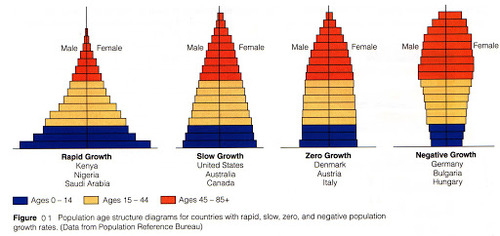Chapter 5: Biodiversity, Species Interactions, and Population Control
How Do Species Interact?
Species Interact in Five Major Ways
Interspecific Competition: Occurs when two or more species interact to gain access to the same limited resources.
Predation: Occurs when a member of one species (predator) feeds directly on all or part of a member of another species (prey).
Symbiosis is a term used to define a close, long-term association 2 or more species, there are three types.
- Parasitism: occurs when one organism (the parasite) feeds on another organism (the host), usually living on or in the host.
- Mutualism: is an interaction that benefits both species by providing
each with food, shelter, or some other resource.
- Commensalism: is an interaction that benefits one species but has little, if any, effect on the other.
What Is Competition and Types of Competition
- Competition is when two or more animals are competing for the same resources
- Competitive Exclusion Principle: No two species can occupy the same niche indefinitely in a habitat where there is not enough of a particular resource to meet the needs of both species.
- Intraspecific Competition: A competition between individuals from the same species
- Interspecific Competition: Competition between members of two different species
Some Species Evolve Ways to Share Resources
- Resource Partitioning: occurs when species competing for similar scarce resources evolve specialized traits that allow them to use shared resources at different times, in different ways, or in different places.
How Do Prey Species Avoid Predators?
- Physical protection
- shells, thick bark, spines
- Camouflage
- Chemical warfare
- poisons, irritating (stinging), foul-smelling or bad tasting (can be poisonous)
- Mimicry
- when a non-poisonous species looks like (mimics) a species that is poisonous
Interactions Between Predator and Prey Species Can Drive Each Other’s Evolution
- Coevolution: when populations of two different species interact over a long period of time, changes in the gene pool of one species can lead to changes in the gene pool of the other
- Example→ Bats and moths- echolocation of bats and sensitive hearing of moths
- The process by which two or more species evolve in response to one another.
- Prey and predator can become locked in a duel of escalating adaptation.
- Example: cheetah and antelope
- Importance: Cheetahs are fast which cause antelope to become faster in order to survive.
How Do Communities Ecosystems Respond to Changing Environments?
- Ecological succession: The normal, gradual change in species composition in a given geographic area
- Primary Ecological Succession: The gradual establishment of biotic communities in lifeless areas where there is no soil in a terrestrial ecosystem or no bottom sediment in an aquatic system
- Secondary Ecological Succession: Occurs were communities or ecosystems have been disturbed, removed, or destroyed, but retain some soil or bottom sediments
- Primary and secondary succession
- Tend to increase biodiversity
- Increase species richness and interactions among species
- Primary and secondary succession can be interrupted by
- Fires
- Hurricanes
- Clear-cutting of forests
- Plowing of grasslands
- Invasion by nonnative species
What Limits the Growth of Population?
Populations Have Certain Characteristics
Population Dynamics: The analysis of the factors that affect the increase, stability, and decrease of populations over time.
Age Structure: A model that predicts the population growth rate by a shape
- Pre-reproductive age: not mature enough to reproduce •
- Reproductive age: capable of reproduction
- Post-reproductive age: too old to reproduce
Population density: The number of individuals in a given geographic area
Population change equation: (births + immigration) – (deaths + emigration)

No Population Can Grow Indefinitely: J-Curve and S-Curve
- Biotic potential: The maximum reproductive rate of an organism
- Environmental resistance: The sum of all factors that limit the growth of a population
- Carrying Capacity (k): The maximum population of a given species that a habitat can sustain indefinitely
- Logistic Growth: When a population grows rapidly, reaches carrying capacity, and stabilizes
Species Have Different Reproductive Patterns
- r-selected species: Have short life spans. Have many, usually small offspring and do not provide much parental care/protection
- K-selected species: Reproduce later in life. Have smaller numbers of offspring with longer life spans. Typically develop inside their mothers and are born fairly large. After birth, they mature slowly and are protected by one or both parents
Genetic Diversity Can Affect the Size of a Small Population
- Founder effect: A change in the genetic composition of a population as a result of descending from a small number of colonizing individuals
- Demographic Bottleneck: A reduction in the genetic diversity of a population caused by a reduction in its size
- Genetic drift: A change in the genetic composition of a population over time as a result of random mating